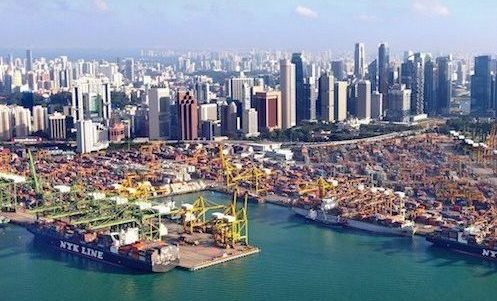Maritime HR: Spotlight on Singapore

The Maritime HR Association has recently published its tenth annual salary survey for its maritime members. Some key findings below.
It was another record breaking year for our survey, with more countries and roles reported.
This year’s survey includes data from 96 member companies, reporting data for more than 26,000 maritime professionals in 119 countries. That’s a lot of data.
The team who coordinate the Maritime HR Association at Spinnaker Global are now comparing the 2016 outcome with previous years; to identify trends across the industry, and have found Singapore salaries to be of specific interest, particularly in light of it being one of the world’s most expensive places to live.
Chartering: In 2016, six of top ten highest paid chartering roles around the globe were located in Singapore. While median salaries across this group of staff remain fairly stable compared to last year, the pay ranges have broadened quite significantly. This can be attributed to both a fairly consistent decrease at the lower ends of the scale, coupled with some quite considerable increases at the top.
Unsurprisingly possibly, the reductions are most prominent at the junior and professional level – where local recruitment is now encouraged via the government’s employment pass arrangement. Senior professionals (i.e. team leaders) in this field of work seem to have been rewarded most generously with a top end average increase of over 20% compared to 2015.
Operations: In contrast, the salary ranges for those working within operations have narrowed (although there does remain some consistent overlap between levels, as you might expect). Year on year analysis shows a continued drop in salaries, most obviously at junior levels. Clearly, this does not mean that individuals have been forced to take pay cuts. Instead, there seems to be more recruitment of local staff at junior levels, who are much less likely to receive inflated ‘local-plus’ salaries. It’s quite a different picture at the more senior level though; with starting salaries generally higher than in 2015 (up to nearly 30% more!) – and director level positions seeing an increase of over 20% at the median.
Shipmanagement: There is mixed impact on technical and marine, safety & quality staff – with some patterns again visible by job level, but also by specialism. Unsurprisingly there is either little change or a reduction seen at the lower end of the pay scales when compared to last year. The upper levels are generally increasing too – especially for technical trainees. This is compared to marine staff who actually see some reductions at the top end – not across the board, but scattered at both the senior management and professional levels.
Gender analysis: For the first time this year, the Maritime HR Association has collated information regarding employee gender within their salary survey, and the analysis is underway.
63 Maritime HR Association members reported their gender data for Singapore, with just 11 unable or unwilling to provide the data. Of the nearly 3,000 employees captured, 40% were recorded as female, compared to 50% male and 10% undisclosed. Some might consider that a pretty good starting position for their analysis. However, when the data is analysed by job function the proportion of females working in maritime specific roles such as newbuildings, operations and shipmanagement, the percentage falls to just 18% of the workforce. Reducing the sample further to that of senior managers within these functions brings the percentage of women down further to just 3.5%.
There are clearly opportunities for improvement and the HR Consulting division at Spinnaker Global is keen to work with members and non-members to address the imbalance.
